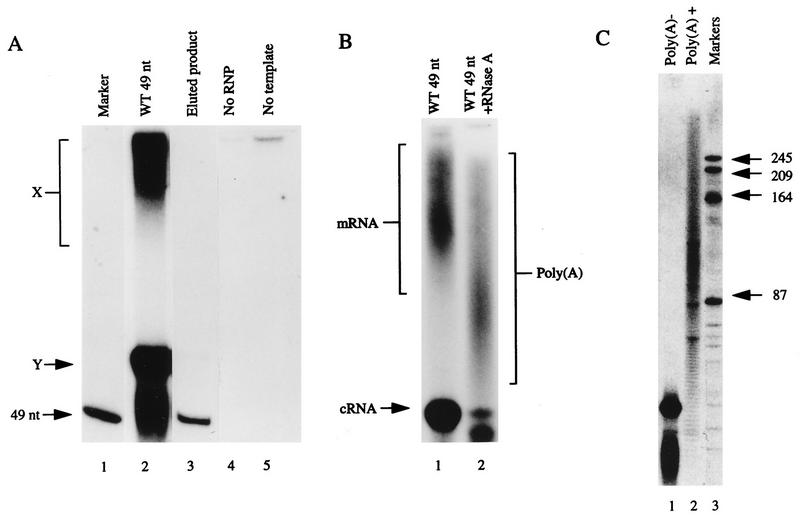FIG. 2.
Development of the [α-32P]ATP incorporation assay with the 49-mer template. (A) Autoradiograph of 16% polyacrylamide–7 M urea gel. Lane 1, 49-nt vRNA marker; lane 2, complete reaction (see Materials and Methods), showing high-molecular-weight products (X) and low-molecular-weight cRNA products, with one near the 49-nt vRNA marker and the other nearby (Y); lane 3, rerun product Y (eluted product); lanes 4 and 5, transcription in the absence of RNP and template, respectively. The weak signal at the origin in lane 5 is thought to be due to transcription of residual endogenous RNP and/or nonspecific binding of radiolabel. WT, wild type. (B) Polyacrylamide gel electrophoresis analysis as described for panel A, showing products of transcription before (lane 1) and after (+; lane 2) RNase A digestion. The mRNA, cRNA, and poly(A) products are indicated. A trace of the cRNA product and a partial digestion product are seen at the bottom of lane 2, and most of the poly(A) signal remains. (C) Analysis on a 10% polyacrylamide–7 M urea gel of unbound (poly(A)− [lane 1]) and bound (poly(A)+ [lane 2]) RNA isolated by oligo(dT)-cellulose separation; lane 3, RNA markers (in nucleotides).

